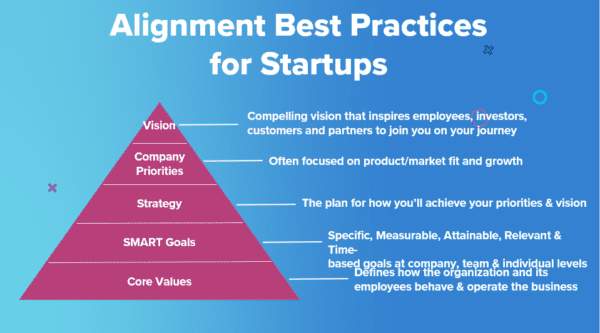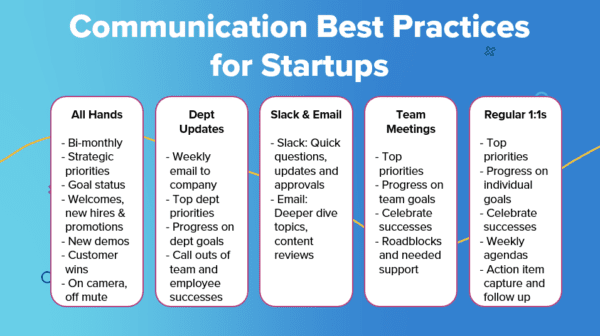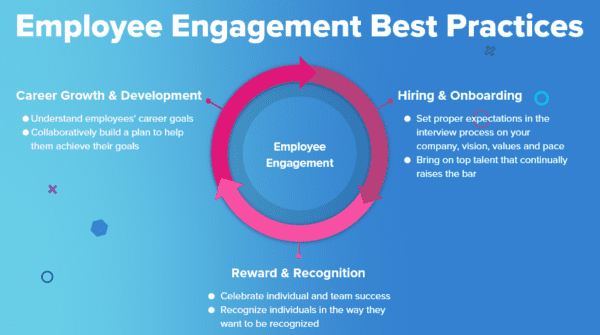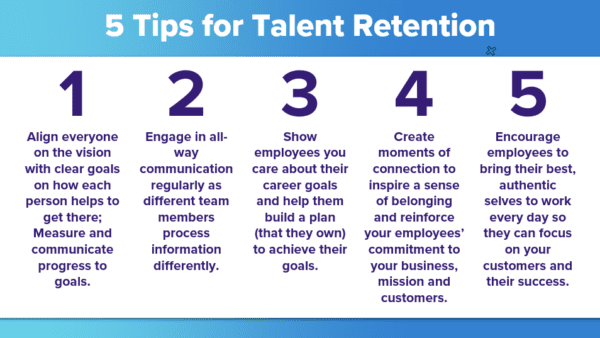Have you checked in on your employees lately? If they aren’t happy, they may leave, which can spell problems for your employee retention rate, which in turn can negatively impact your business as a whole.
Fortunately, there are strategies you can implement to ensure that your workforce is engaged, happy, and driving the business forward. In a special presentation, Secureframe COO Seema Kumar shares common leadership challenges in today’s modern workforce, best practices, and tips for talent retention.
Startup Leadership Challenges
The post-digital transformation workplace is fascinating– many offices opt to operate remotely or on a hybrid basis, attracting talent, creating flexibility for employees, and potentially reducing overhead costs.
But the modern workplace presents a few key leadership challenges that must be overcome to boost employee retention.
- Alignment & Communication: Managers must have a finger on the pulse of how their teams are doing and what they’re focusing on, and in turn, effectively communicate expectations with their employees. This is more challenging for remote workforces.
- Employee Engagement: Employees need clarification about goals and priorities to feel more engaged.
- Connection and Belonging: Being physically isolated can create disjointed relationships and confusion about their purpose in your company, which is never good for your retention. Says Kumar, “Companies are a living, breathing entity –– a living, breathing organism. In order for your employees to be engaged…they have to feel like they are a part of something bigger. They have to understand the vision that the company is working toward, and they have to understand the role that they play in achieving that vision.”
Working on shortcomings in these areas is essential if you want to reduce burnout and improve all areas of your startup. Kumar says, “If you have low employee retention, you’re going to spend more money on recruiting…You’re going to spend more money training your employees. You’re going to have people out of key roles for months, and that affects your company’s burn rate.”
Best Practices and Tips for Talent Retention

Alignment: Align every employee on the vision with clear goals on how each person helps you get there. Measure and communicate progress to goals.
Start by defining the following:
- Vision: Compelling company vision that inspires employees, investors, customers, and partners to join you on the journey.
- Priorities: Determine what you will focus on to help realize your vision. This will usually center around PMF (product-market fit) or growth.
- Strategy: The plan for how you will achieve your priorities and, ultimately, the vision.
- SMART Goals: Create goals that are specific, measurable, attainable, relevant, and time-based down to the individual level.
- Core Values: These dictate how your organization and employees behave and operate the business and should be understood and followed by everyone.

Communication: Engage in all-way communication regularly across multiple channels as different team members process information differently.
Kumar shares some special advice for management here: “Engage in all-way communication. So that’s up, down, and across. I see a lot of leaders make the mistake of always communicating down –– ‘these are my priorities, here is what I need from you, here is my feedback for you.’ Remember that your employees are the ones talking to your partners, customers, and prospects. They are the interface, and you need to make sure you get input and feedback from them.”

Employee Engagement: Show your employees that you are invested in their career goals and help them build a plan (that they own) to achieve those goals.
Set expectations starting at the interview process on company values, pace, and vision. Also, reward employees for good work recognition, thoughtful thanks, and compensation.
Connection & Belonging: Create moments of connection to inspire a sense of belonging and reinforce your employees’ commitment to the business, mission, and customers. Consider having “feelings check-ins” to help build those bonds. It may seem strange to try at first, but when managers and employees share their emotions with each other, it can encourage more honesty and respect and strengthen relationships.

The Big Takeaway
Encourage your employees to bring their best, authentic selves daily so they can focus on your customers and their success.

